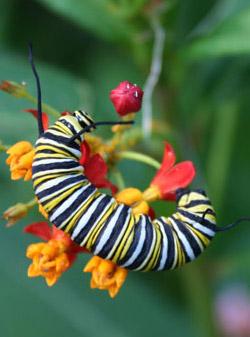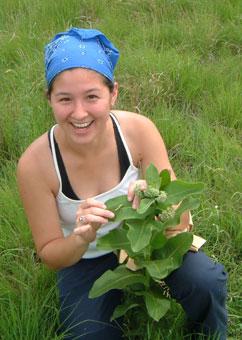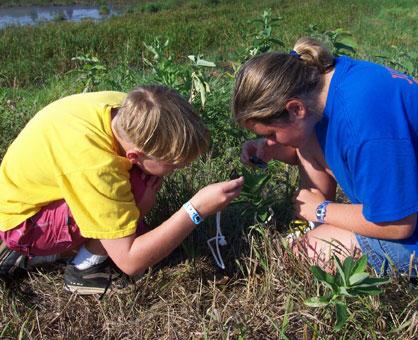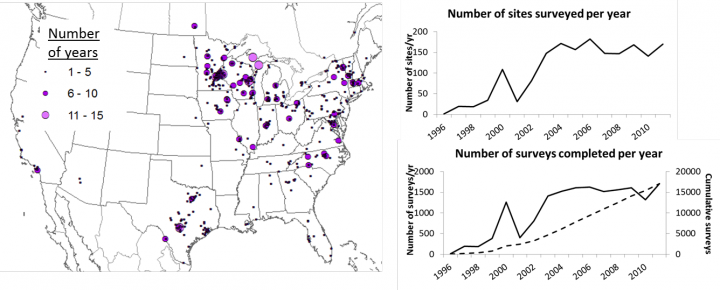The Monarch Larva Monitoring Project (MLMP) is a citizen science project involving volunteers from across the United States and Canada in monarch research. It was developed by researchers at the University of Minnesota to collect long-term data on larval monarch populations and milkweed habitat. The overarching goal of the project is to better understand how and why monarch populations vary in time and space, with a focus on monarch distribution and abundance during the breeding season in North America.
Monarch Larva Monitoring Project
Snapshot

Protocol
Program Results
MLMP data have been used in publications by both project personnel and other scientists. These papers have addressed impacts of crowding on disease incidence in monarchs (Lindsey et al., 2009), potential impacts of climate change on monarchs (Batalden et al., 2007), incidence of a fly parasitoid in monarchs (Oberhauser et al., 2007), natural enemies of monarchs (Prysby, 2004), temporal and spatial patterns in monarch abundance (Prysby and Oberhauser, 1999, 2004), and impacts of Bt corn pollen on monarchs (Oberhauser et al., 2001). Year to year variation in monarch density is useful for assessing long-term trends in monarch population numbers (see figure below).
The MLMP has resulted in a database that has helped scientists, policy-makers, citizens, and the media to understand the importance of long-term data in understanding animal, especially insect, population trends. From a conservation perspective, the protocol and findings were utilized in the North American Monarch Conservation Plan (Oberhauser and Prysby, 2008), and citizen volunteers have reported both an increased awareness of conservation issues and increased local conservation activism (Kountoupes and Oberhauser, unpublished data). Additionally, nature center professionals, teachers, and parents have used the program as a science education tool with youth, and report increased familiarity with the process of science as a result (Kountoupes and Oberhauser 2008).
Rea, B., K. Oberhauser, M. Quinn. 2002. A field guide to invertebrates on milkweed. (96 pp.) Bas Relief Publishing Group, Pennsylvania.
Hoth, J, I. Pisanty, K. Oberhauser, L. Merino and S. Price, editors. Commission for Environmental Cooperation: Montreal, QC.
 ,
,  ,
, 

